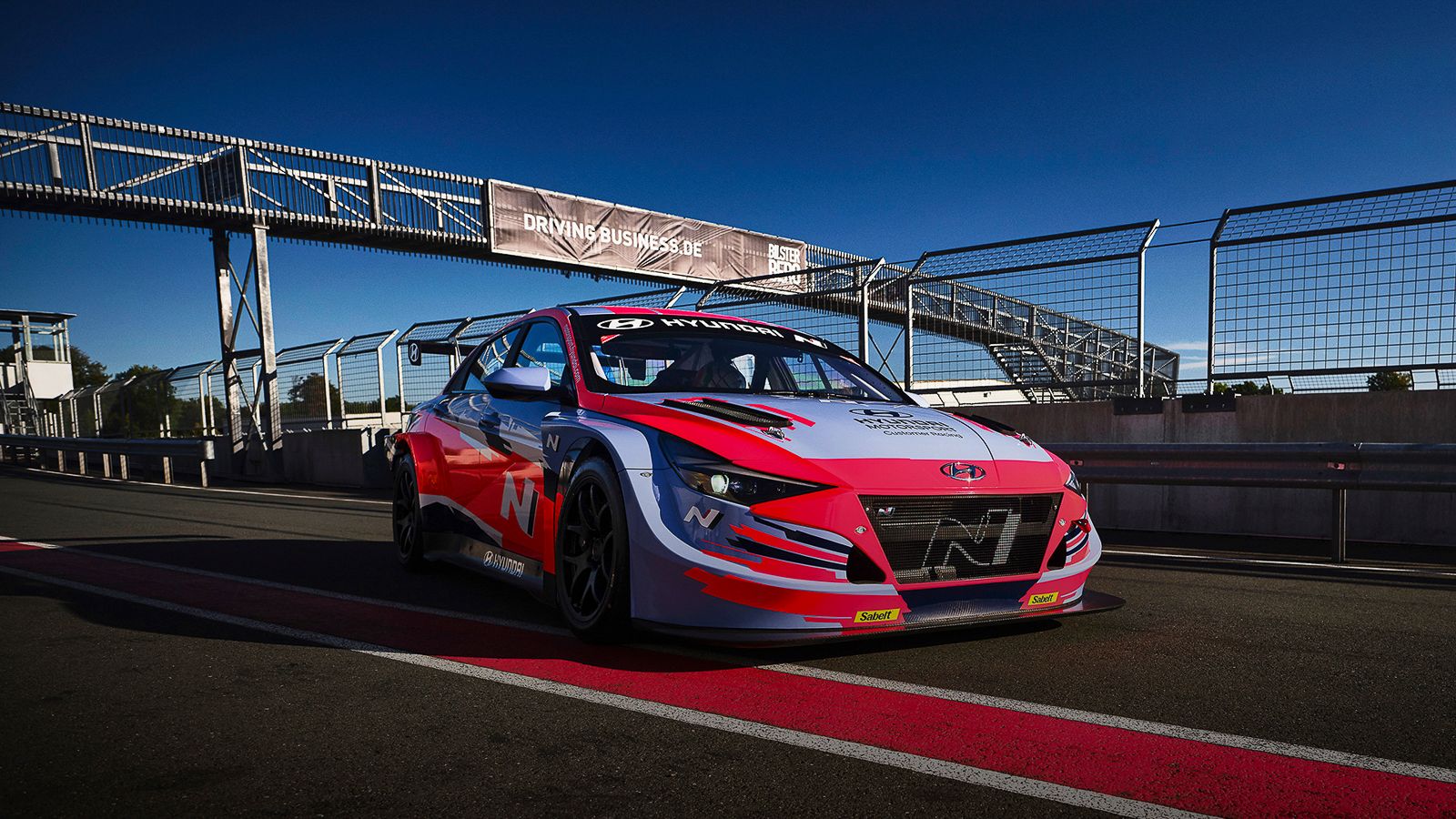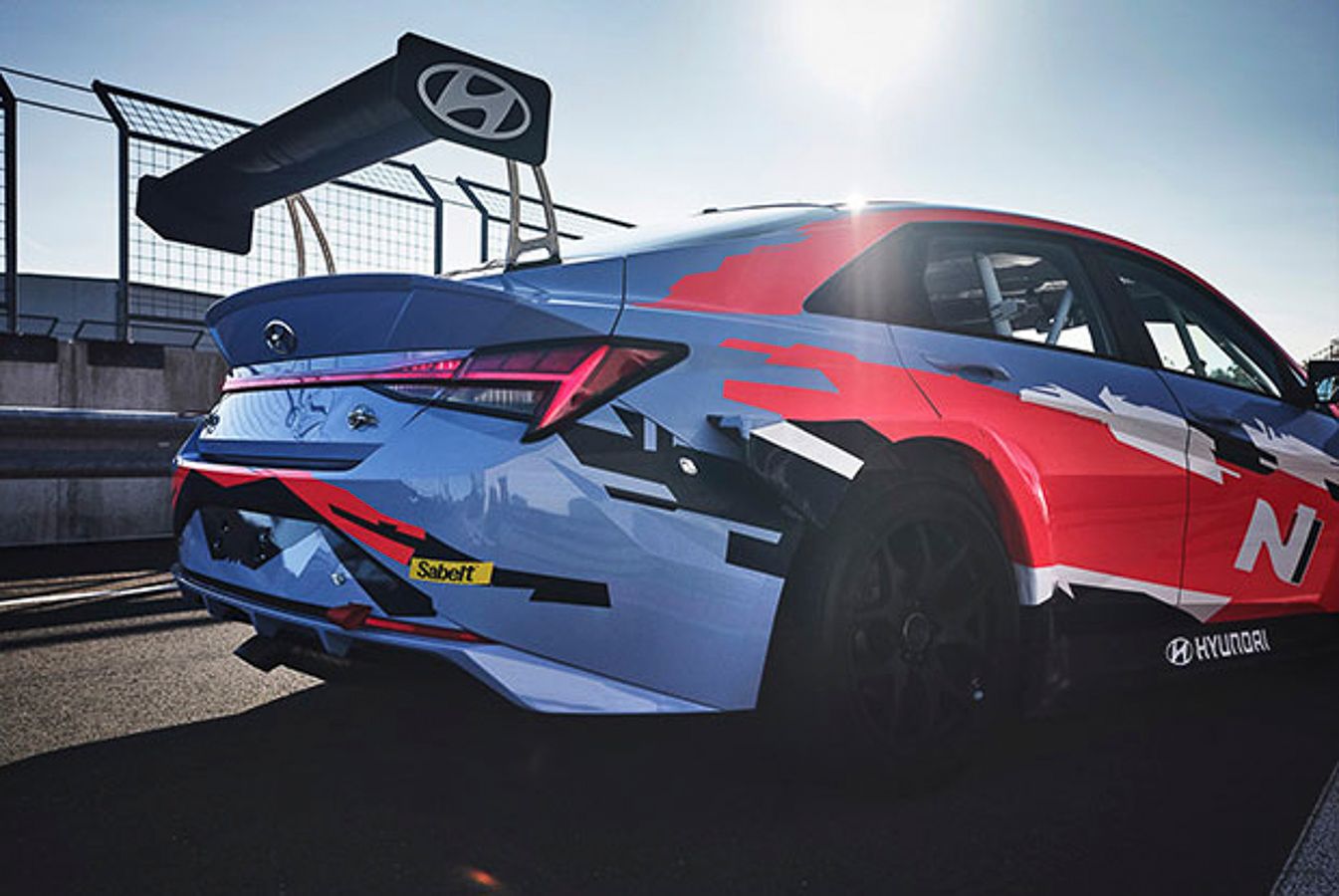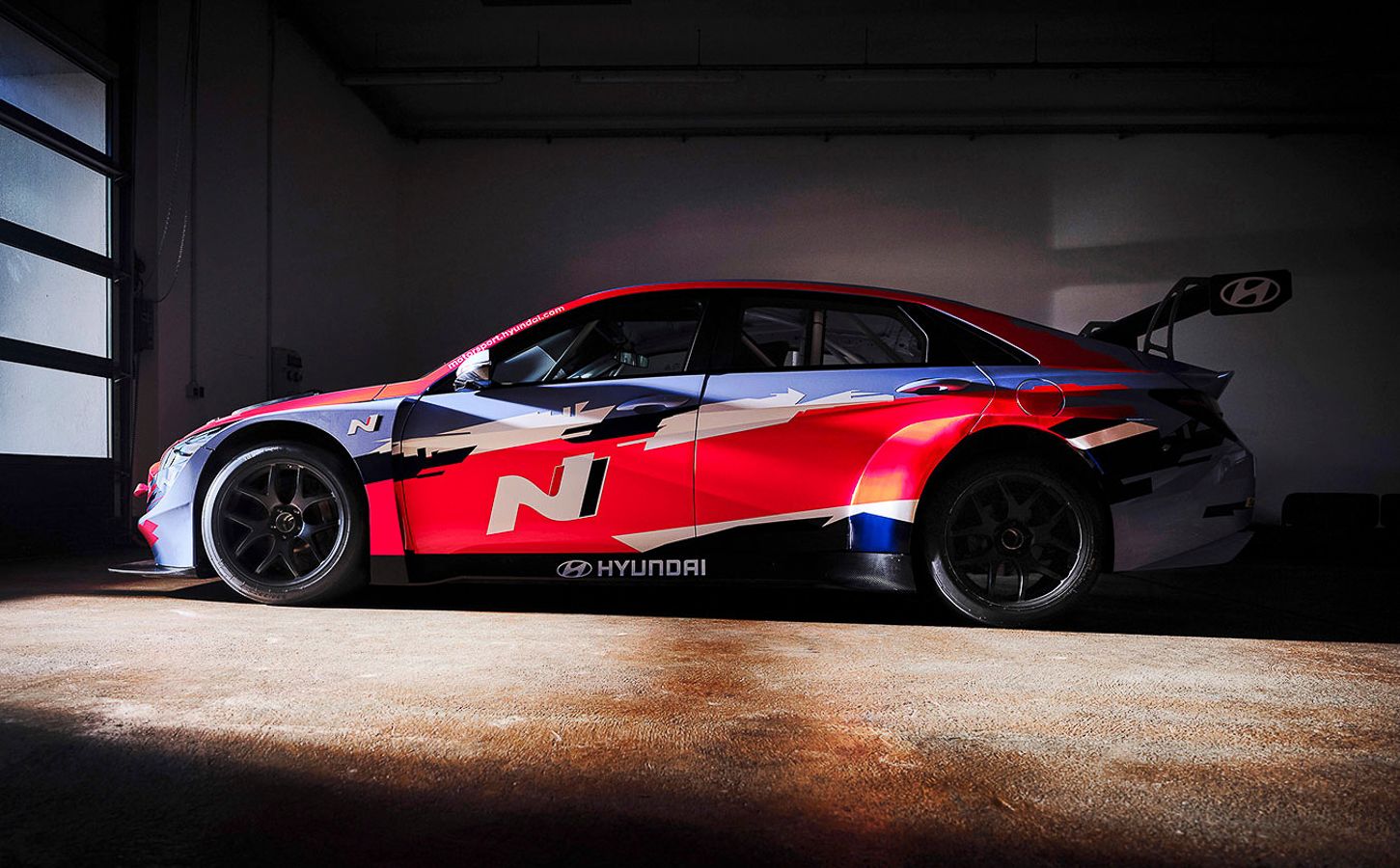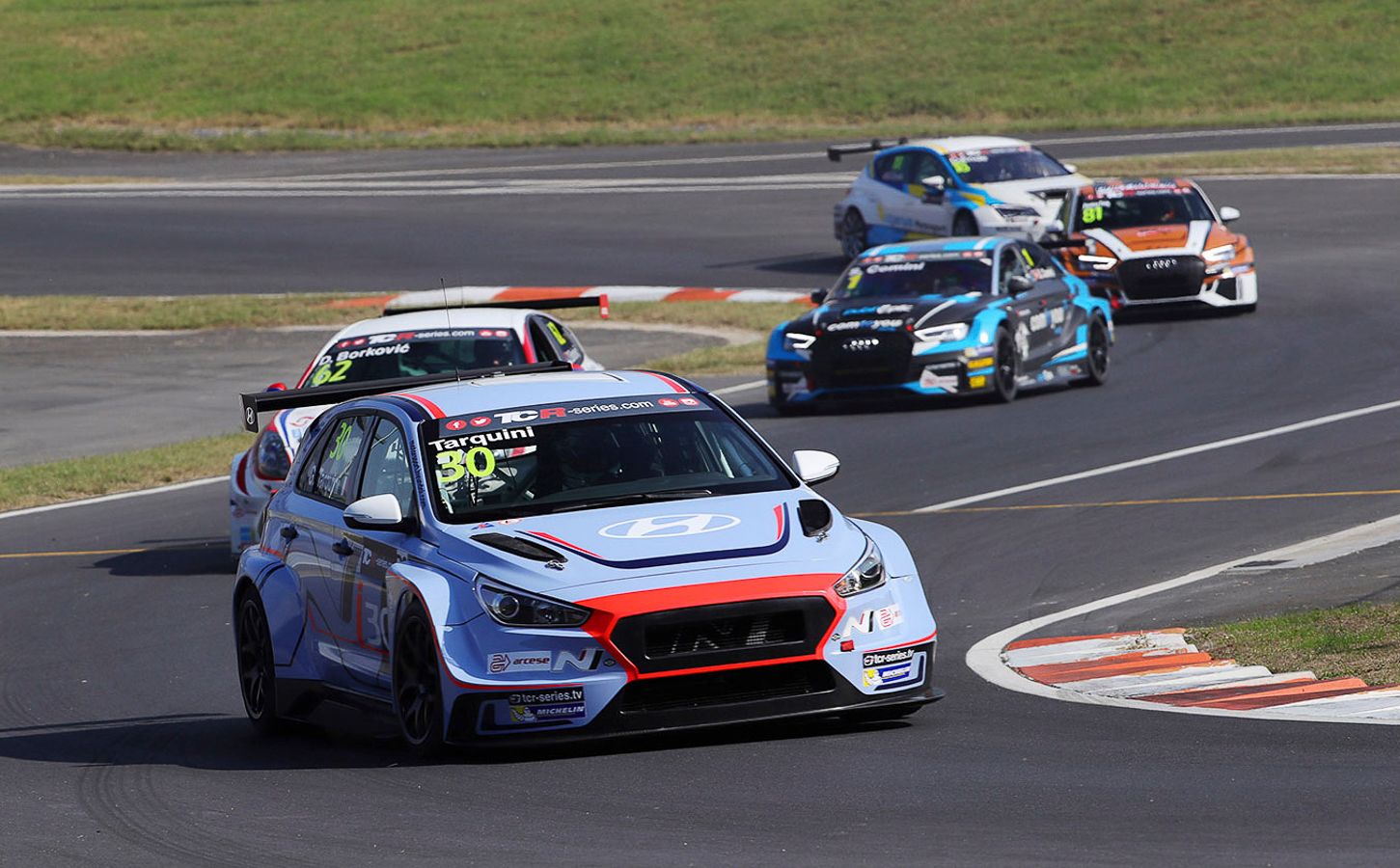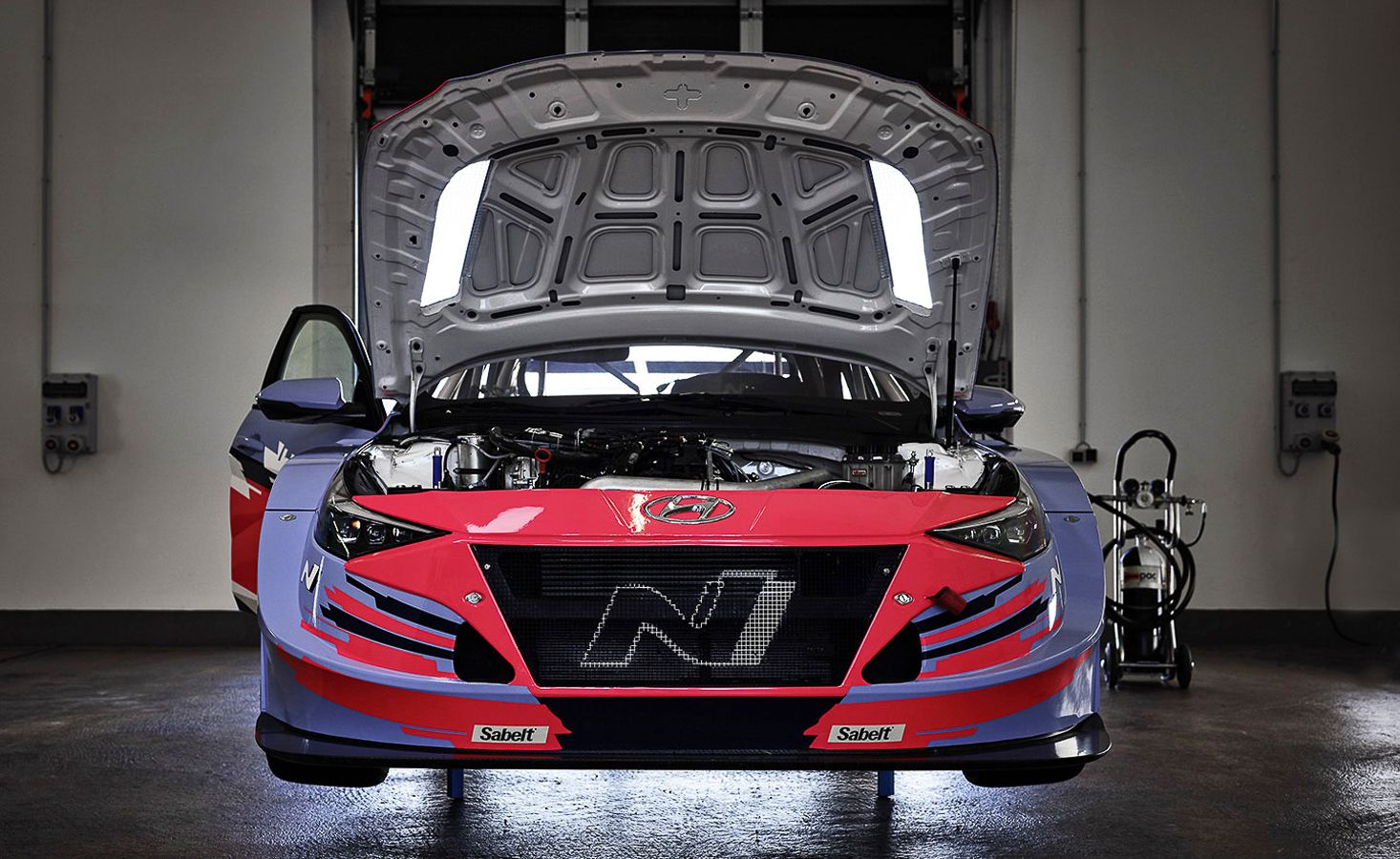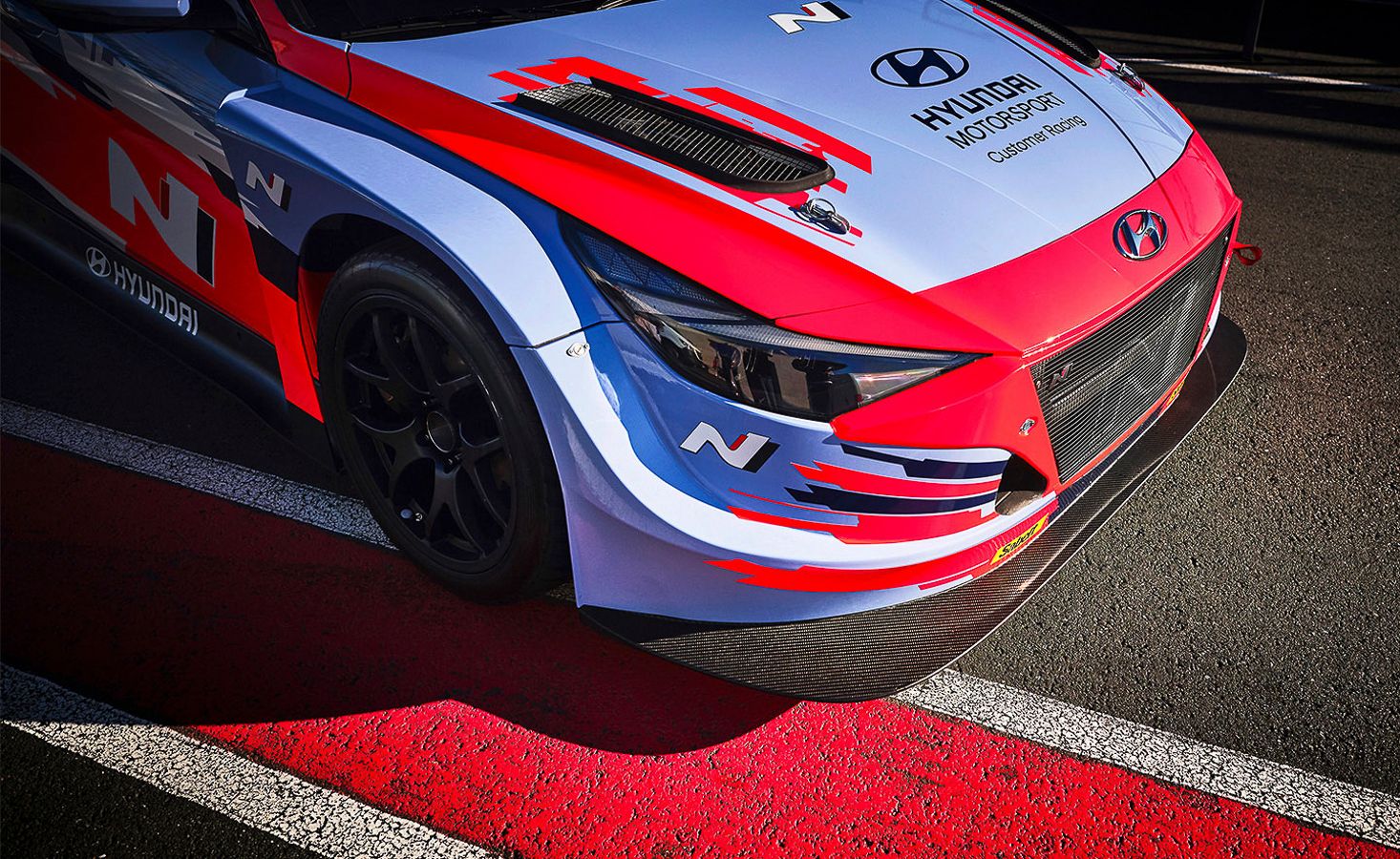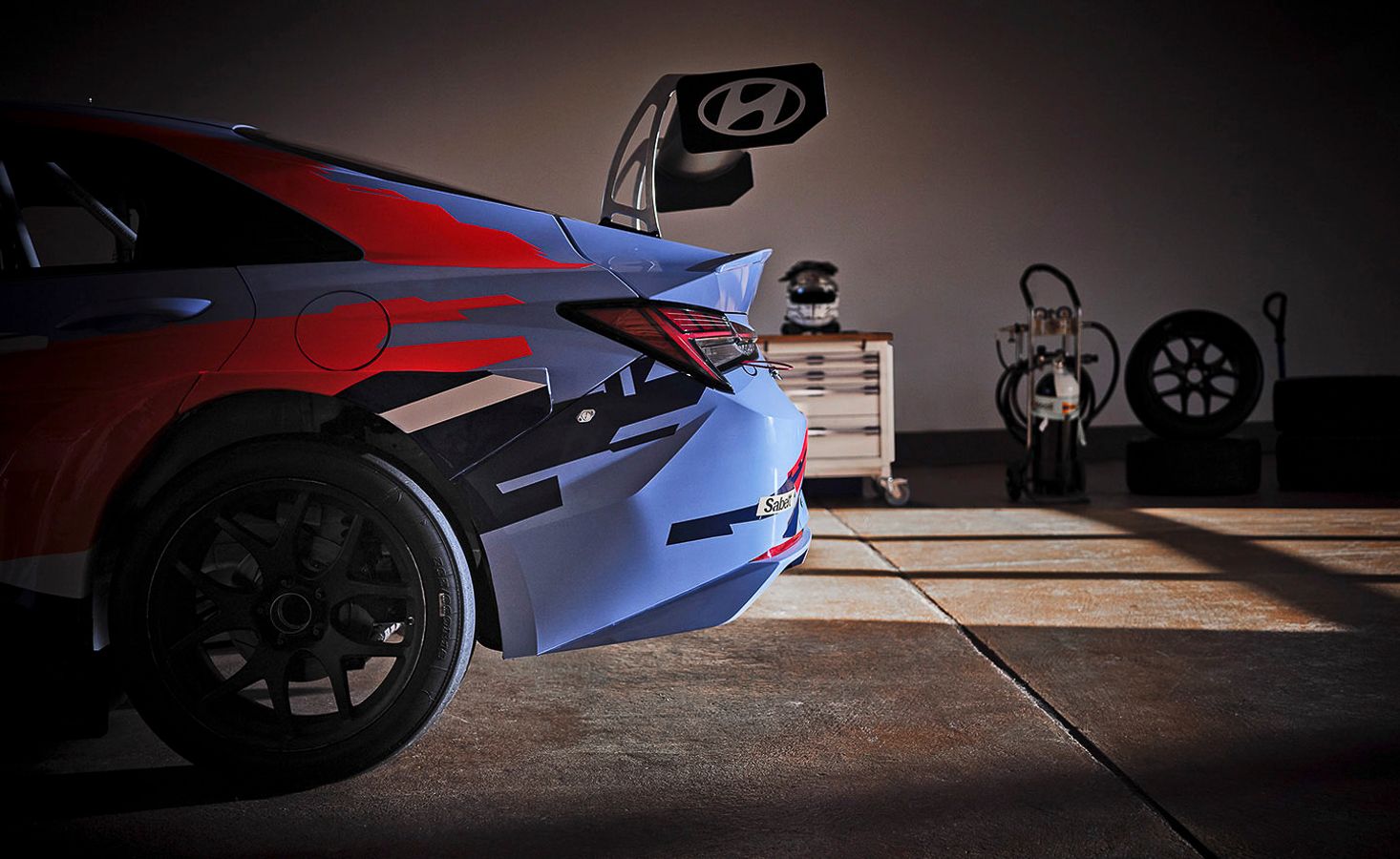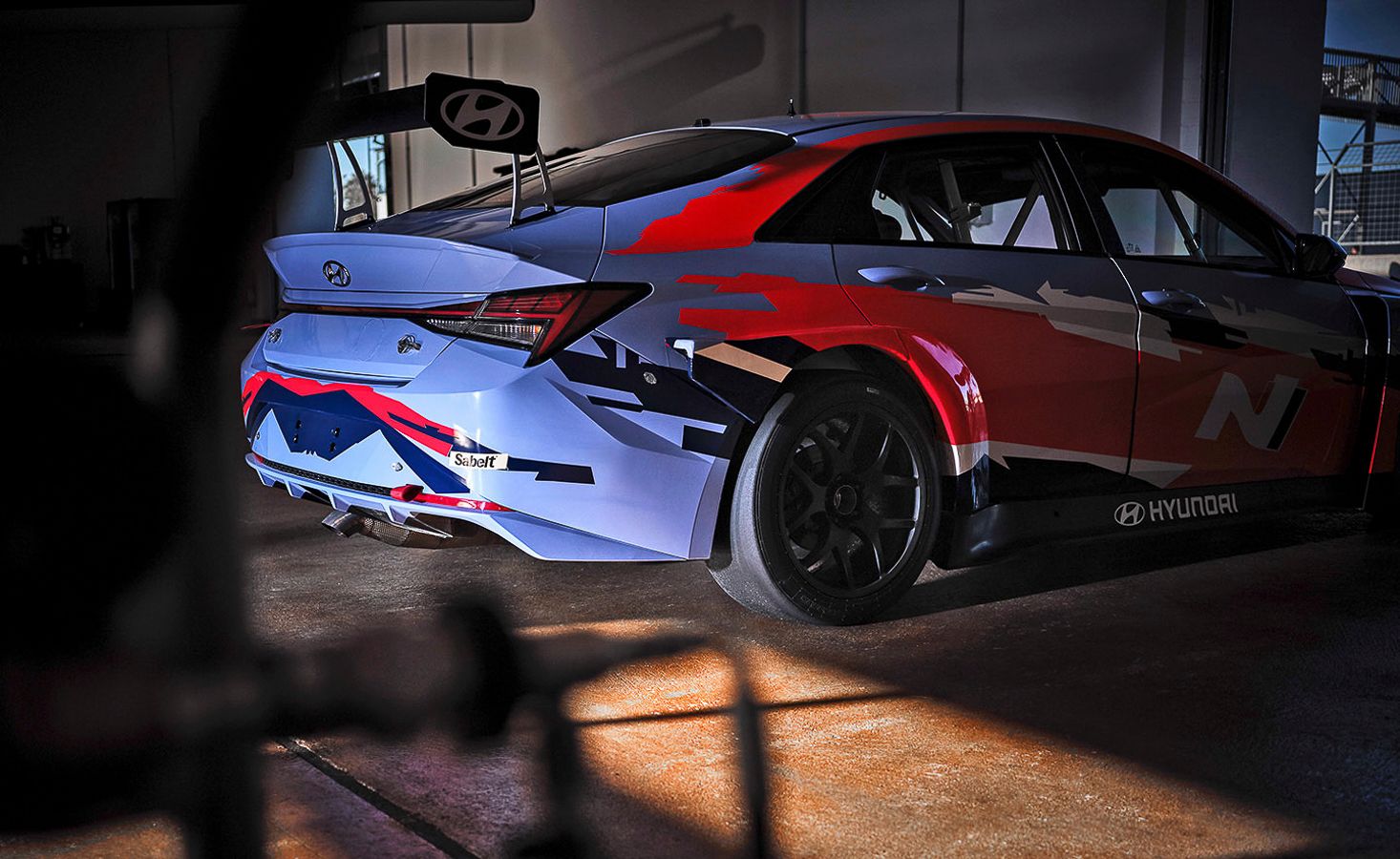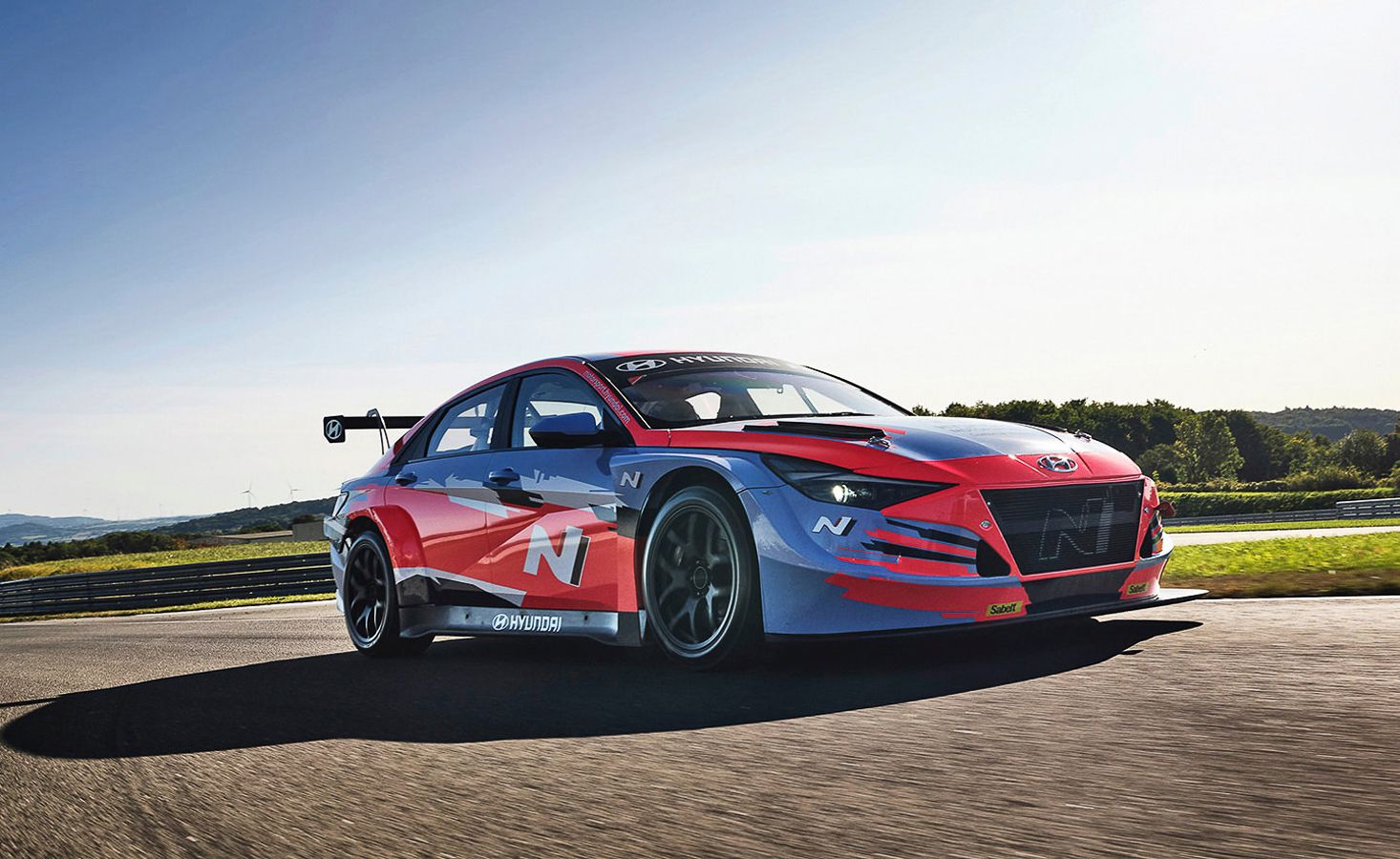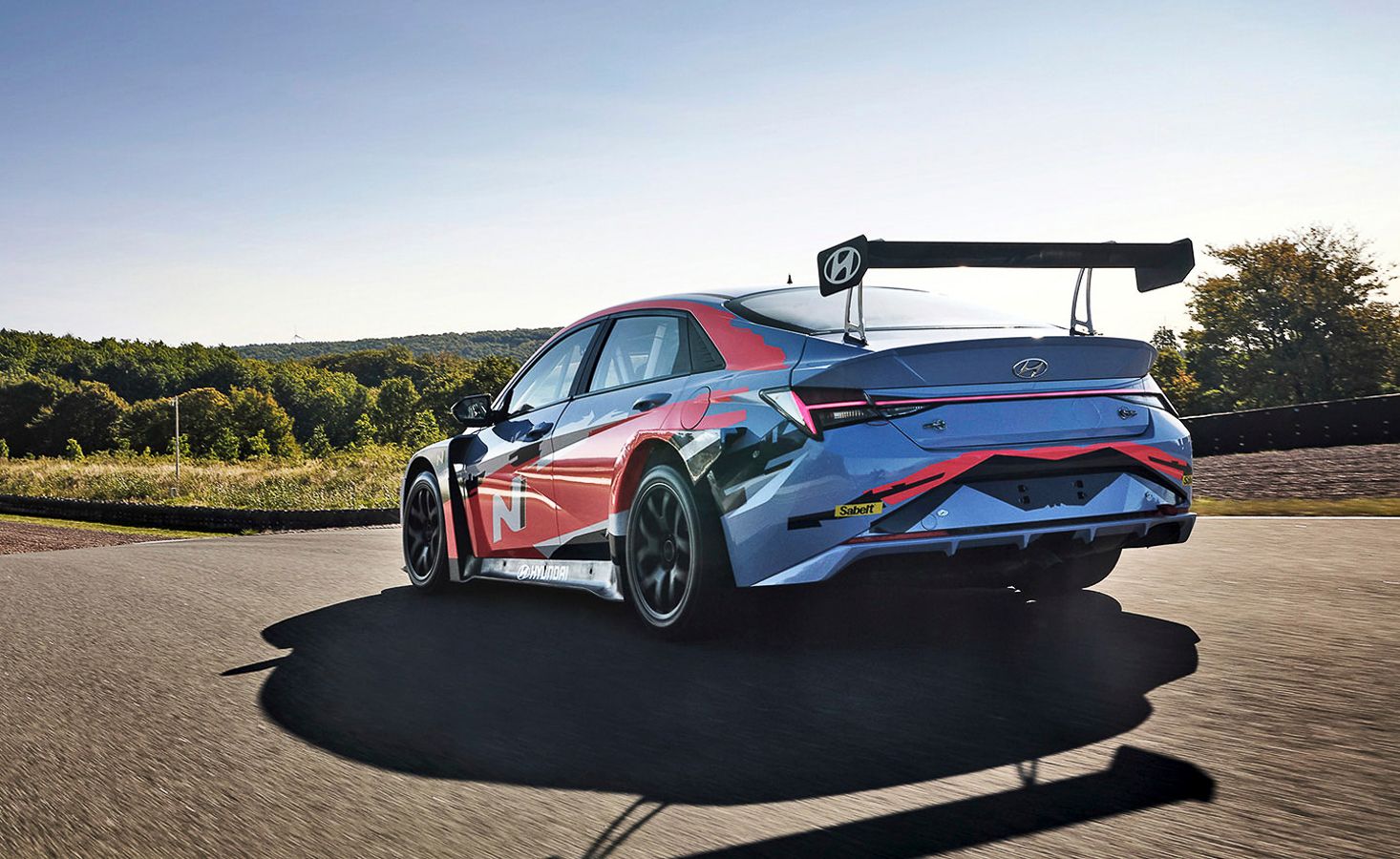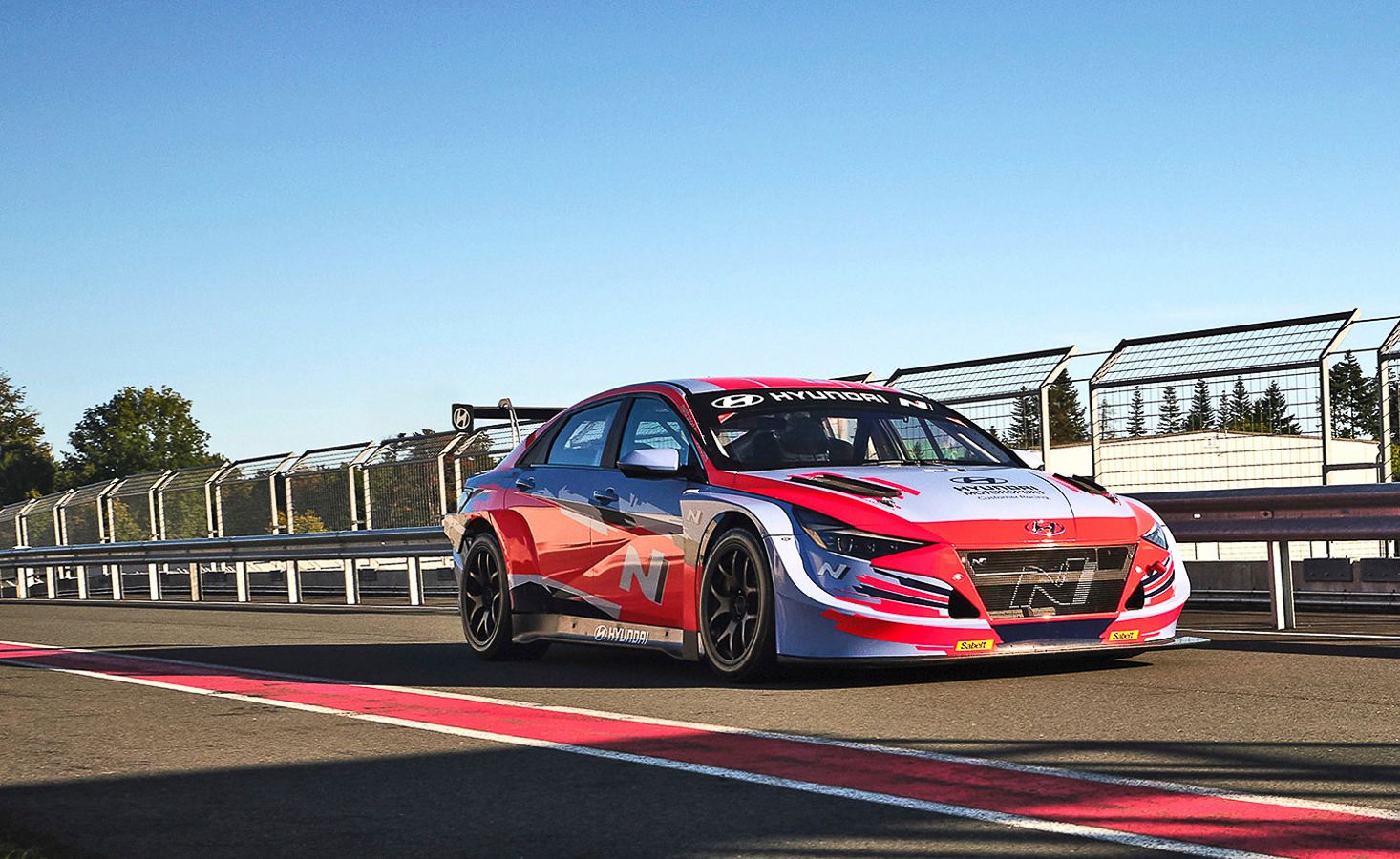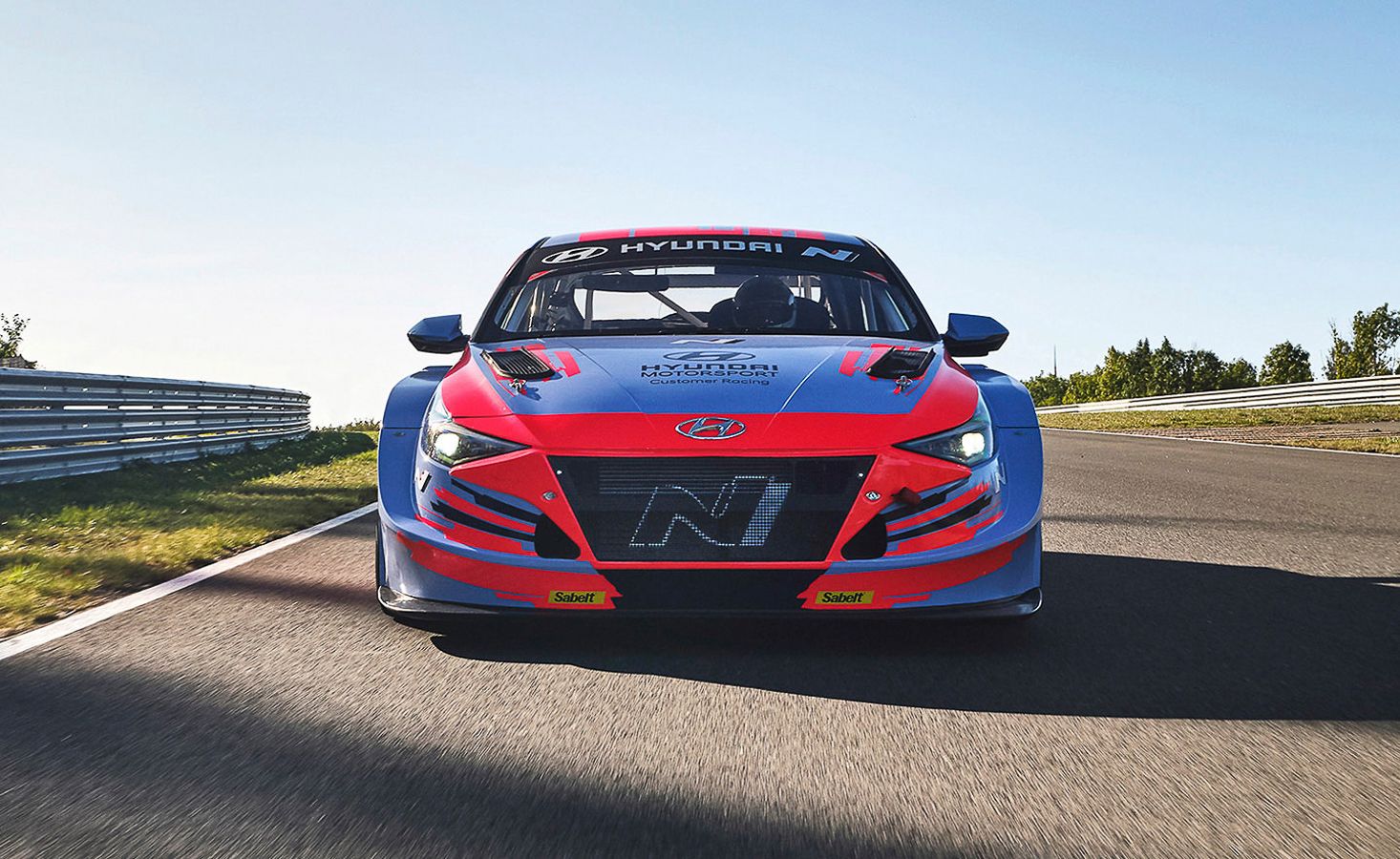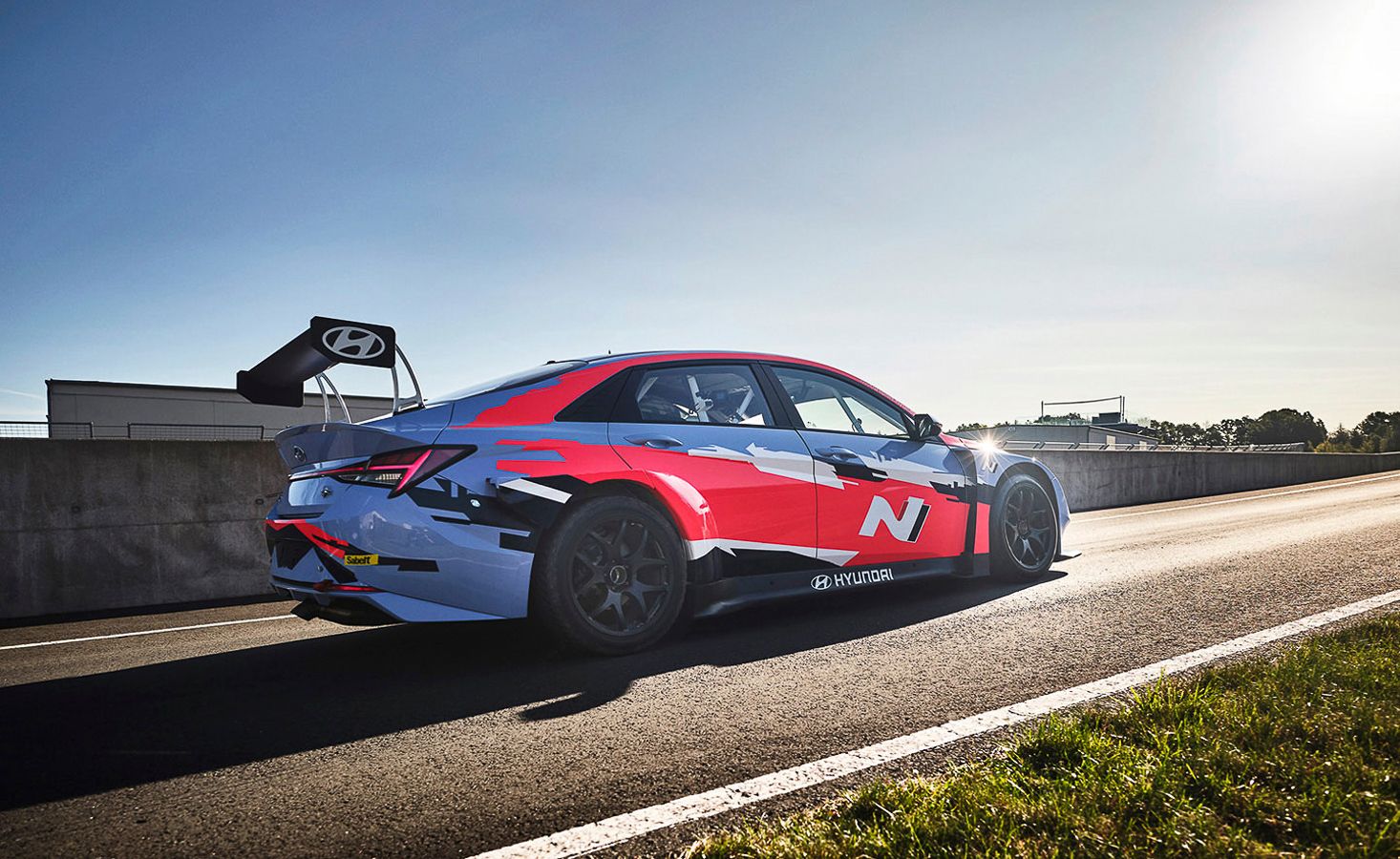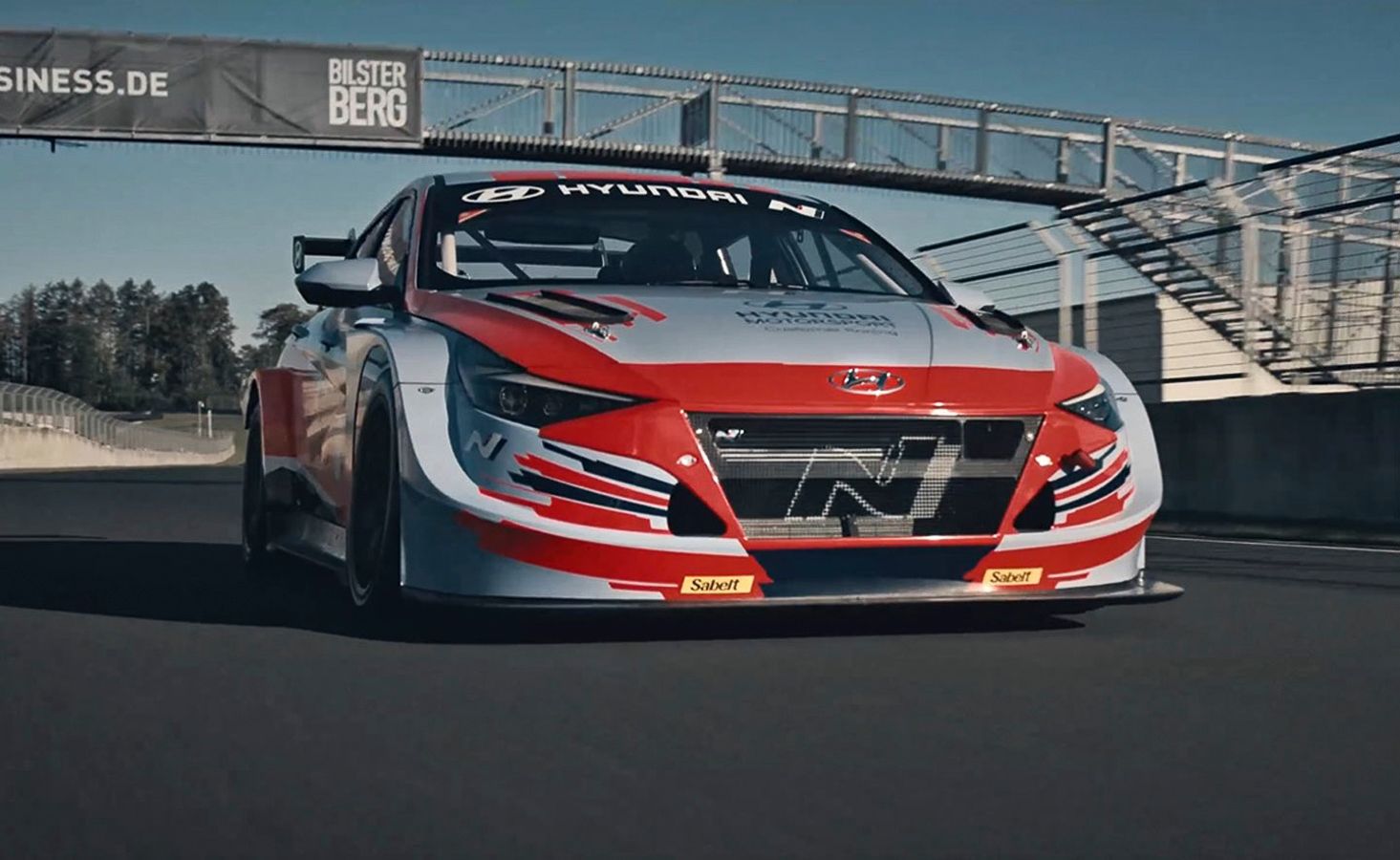Like the other TCR cars before it, the Elantra N TCR is a race car you can’t get to drive on public roads. It has been developed to serve private racing teams and it’s underpinned by the popular Elantra sedan; although not much is carried over from the original car except the chassis and well, the name.
2021 Hyundai Elantra N TCR
- Make: Array
- Model: 2021 Hyundai Elantra N TCR
- [do not use] Vehicle Model: Array
We got a glimpse of the new Hyundai Elantra N TCR back in 2020, at the Beijing Motor Show. Thatâs when we heard from Hyundai that development for the Elantra N TCR had started in mid-2019 from a blank sheet of paper, so designers and engineers could experiment and mix based on their previous experience in creating the i30 N TCR and Veloster N TCR. That said, letâs have a look at what awaits underneath the sheet metal.
Hyundai Elantra N TCR - Powertrain
Under the hood sits a 2-liter (1998cc), inline-four turbo engine with two overhead camshafts and 16 valves. The mill churns out 350 PS (345 horsepower) at 7000 rpm and 450 Newton-meters (332 pound-feet) of torque at 3500 rpm.
Power goes to the front wheels through a six-speed sequential gearbox (itâs operated via paddle shifters) fitted with a cerametallic twin-disc clutch and a multi-plate limited-slip diff. Weâre told Hyundai tested and finely tuned the drivetrain over 5,000 kilometers (3,100 miles), on which the Elantra N TCR was tested for three months in a variety of scenarios, including sprint racing and endurance.
2021 Hyundai Elantra N TCR specifications
|
Engine |
2-liter (1998cc), inline-four turbo |
|---|---|
|
Horsepower |
345 HP @ 7,000 RPM |
|
Torque |
332 LB-FT @ 3,500 RPM |
|
Transmission |
six-speed sequential |
Hyundai Elantra N TCR - Chassis and Suspension
In the front, Hyundai went for a MacPherson strut setup with coil springs and gas-filled dampers as well as an anti-roll bar. In the rear, the Elantra N TCR rides on a four-arm multilink axle, coil springs, gas-filled dampers, and an anti-roll bar. The steering is of the power assisted, rack and pinion variety.
Stopping power comes from six-piston calipers in the front biting into 380mm ventilated steel discs. The rear end braking setup gets two-piston calipers and 278mm rotors. Weight-wise, the Elantra N TCR must tip the scales at minimum 1,265 kilos (about 2,789 pounds) including the driver and the 100-liter (26.4-gallon) fuel tank.
Hyundai Elantra N TCR - Exterior and interior
While itâs obvious what changes were made to the regular Elantraâs body (think new spoilers, a fixed rear wing and diffuser, as well as bulkier wheel arches and extra air vents), we donât get too much details on what lies inside the Elantra N TCR. All Hyundai mentions relates to a pair of OMP race seats with six-point safety harnesses.
Granted, this is not your run-of-the-mill Elantra cabin in the sense that most of the panels have been surely deleted to save weight. A roll cage was installed and itâs safe to assume that the cabin now looks as ripped as a Spartan soldierâs abdomen. Oh, and the 18-inch wheels are aerdynamically-tweaked and designed by Hyundai Motorsport.
Availability and price
Hyundai intended to deliver the Elantra N TCR to paying customers starting with the end of 2020. We canât tell you if race teams started to receive their cars, and thereâs no price tag on the Elantra N TCRâs head announced at the time of writing. All we can say is that the i30 N TCR can be had for a base sticker of â¬128,000, which includes a â¬15,000 deposit that confirms your order. We guess the Elantra N TCR would be priced above the i30 N TCR, but thereâs not enough information to put our fingers onto something palpable.

